Driving Dystopia: License Plate Readers Are Becoming Increasingly Common

Policing a population is expensive. Law enforcement departments around the globe have long sought a way to tamp down costs or, more often, find better forms of supplemental revenue. Unfortunately, sending the SWAT team on a raid or hiring additional officers to patrol the highway for speeders costs money. But the price of surveillance technology continues to go down, encouraging agencies to tap into their rather robust capabilities — potentially at our expense.
China, the world leader in mass government surveillance, already has the ability to use its vast network of cameras to take over all manner of on-the-street policing. Electronic eyes are everywhere, often networked to facial recognition or plate identification technologies that enable authorities to mail you a ticket for speeding, jaywalking, or whatever else the patrolman failed to see you do in person. While some of the penalties stop at being publicly shamed via a national database or having your social credit score dropped (potentially barring you from some goods and services), these systems have also increased the number of finable offenses that make departments money.
While similar systems have been available in the United States, it seems the country’s penchant for liberty has drastically slowed their implementation. Yet it’s still happening, and there’s reason to suggest items like license plate readers and facial recognition software will soon become standard equipment for many (if not most) North American police departments.
There are two ways to look at this. Either it’s the second coming of the police radio, which made evading the police much more difficult in the second half of the 20th century, or an affront to our collective right to privacy.
What makes it tricky is that license plate readers and facial recognition tech works in tandem with a database and often keeps tabs on where you’ve been and where you’re going before a crime is committed. For some that’s a bridge too far, bordering on pre-crime — a term coined by science fiction author Philip K. Dick to criticize the criminal justice system’s tendency to focus on prospective harm, rather than acts actually committed.
Dystopian parallels aside, WIRED recently tried to assess the growth of these types of surveillance systems in the United States and Canada, addressing their evolution, deployment, and the surrounding criticisms.
Using Rotterdam, New York, as an example, the outlet noted the town’s department only has 45 officers on staff, yet still manages to log the license plates of around 10,000 vehicles each day as they move through the city. Jeffrey Collins, a lieutenant who supervises the department’s uniform division, said the system opened up new doors. Tracking data is kept and officers can parse through it to identify a vehicle and then cross-reference its plate, make, model and color.
“Let’s say for instance you had a bank robbed,” he theorized. “You can look back and see every car that passed.”
From WIRED:
The tech industry’s current enthusiasm for AI was kindled by a research breakthrough in 2012 that vastly improved the ability of software to recognize objects in photos. One result is progress on still-nascent projects such as autonomous vehicles and software that diagnoses cancer. In the real world, more straightforward applications of the technology have made tracking faces or license plates much cheaper and more accurate.
Automated license plate readers, or ALPRs, first appeared at police departments in the 2000s, as specialized and expensive cameras. Collins says today those devices typically cost $15,000 to $20,000. But last year Rotterdam embraced a newer generation of ALPR technology, software that can discern plates from more or less any conventional security camera. Rotterdam’s supplier Rekor Systems charges as little as $50 a month to read plates from a single camera.
“The software is a lot more cost effective than buying a full system,” says Collins. “That can change everything.” Drivers in Rotterdam used to be watched by three conventional license plate readers, two fixed and one mounted to a police vehicle. Now, five of the town’s public security cameras also are connected to Rekor’s software, significantly expanding the police’s view of the movements of local vehicles.
Rekor is hardly alone. The tech industry is sprinting to see who can deliver the best surveillance hardware possible and dozens of companies have come out of the woodwork to participate. Some cater to police departments while others focus on home security, but their goals are largely the same. While some have identified the potential for harm, even these concerns are narrow in scope.
Axon, a supplier of police body cams, plans to sell license plate readers as an add-on to its in-car video system in 2020. However, when it made its announcement, it also released a report from its AI ethics board about the dangers of using ALPRs and recommended some government regulation (of which there currently is very little). Still, its fears focused largely on the possibility of lower income communities being overly policed or AI’s feeding into racial basis, ignoring the broader implications of widespread surveillance.
Privacy advocates also feel more should be done. Daniel Schwarz, who works on policy for the New York Civil Liberties Union, says the technology’s increasing affordability means restrictions need to be placed on their use very soon — especially as companies attempt to aggregate traffic data so it can be easily shared between departments.
“Widespread deployment is creating invasive databases with a comprehensive record of people’s movements,” Schwarz explained. “That can show whether you’re going to a certain medical clinic, your political interests, and religious beliefs.”
WIRED noted that Los Angeles law enforcement agencies make tens of thousands of license plate queries each year, thanks to an $6 million ALPR system built for the LAPD by Palantir. The good news is that California requires departments issue some form of privacy policy if they use the system, and the state’s Highway Patrol must delete all ALPR data every 60 days. Unfortunately, it’s one of the few states that has any laws governing the practice.
Asked about his own department’s data retention policies, Rotterdam’s Collins said “as long as we possibly can,” adding that they already use the ALPR database everyday.
These systems are definitely coming and will undoubtedly make it more difficult to avoid punishment stemming from minor infractions, perhaps while saving some lives in the process. But we must also ask ourselves if this evolving surveillance standard is for the greater good — and what kind of ramifications might occur as ALPRs and the like become more commonplace.
[Image: Leonard Zhukovsky/Shutterstock]

A staunch consumer advocate tracking industry trends and regulation. Before joining TTAC, Matt spent a decade working for marketing and research firms based in NYC. Clients included several of the world’s largest automakers, global tire brands, and aftermarket part suppliers. Dissatisfied with the corporate world and resentful of having to wear suits everyday, he pivoted to writing about cars. Since then, that man has become an ardent supporter of the right-to-repair movement, been interviewed on the auto industry by national radio broadcasts, driven more rental cars than anyone ever should, participated in amateur rallying events, and received the requisite minimum training as sanctioned by the SCCA. Handy with a wrench, Matt grew up surrounded by Detroit auto workers and managed to get a pizza delivery job before he was legally eligible. He later found himself driving box trucks through Manhattan, guaranteeing future sympathy for actual truckers. He continues to conduct research pertaining to the automotive sector as an independent contractor and has since moved back to his native Michigan, closer to where the cars are born. A contrarian, Matt claims to prefer understeer — stating that front and all-wheel drive vehicles cater best to his driving style.
More by Matt Posky
Latest Car Reviews
Read moreLatest Product Reviews
Read moreRecent Comments
- Master Baiter Cells capable of accepting fast charge have been available for years in power tools. You sacrifice energy density in cell designs of that type.
- 2ACL 500s seem to be decent if one stays on top of maintenance. I test-drove some middle-mileage examples car-shopping for the girlfriend and they made a stronger impression upon me than I expected. Haven't driven an Abarth, but I suspect they were among the best cared for given their enthusiast bent.That said, I recall the Multiair Turbo has some wacky service intervals (i.e. 30k miles for spark plugs), the car as a whole imposes utility and component accessibility challenges as well as fuel economy that's worse than several next-size up cars with comparable power. Interesting, but a terrible value IMO.
- Kjhkjlhkjhkljh kljhjkhjklhkjh Just looking at the PLUMETING cost of used tesla's (28k for a 3P ex) I contest the ''gubberment'' argument. If anything the gubberment is his BEST AND ONLY ALLY because with the increasing emissions regulation a cheap tesla is a hell of a buy.but as previously stated .. were in a saturated market for EV's right now.
- SCE to AUX This must have been a very interesting event.Of course, 'sustainability' may come with a price tag.
- Redapple2 TTAC ate my post. 2 paragraphs. Hit Send. No post apprears. 3rd time. I ll write less. Becoming the KMart of sites?

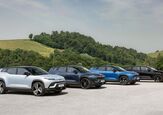
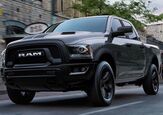
















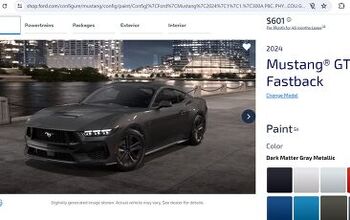
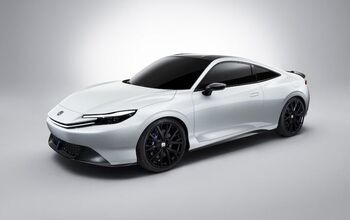

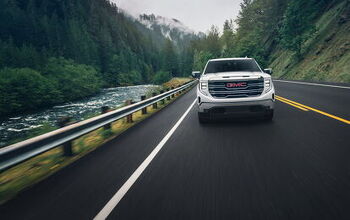
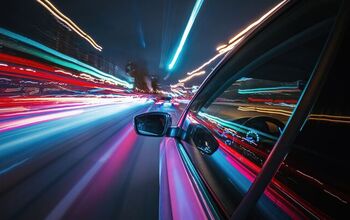
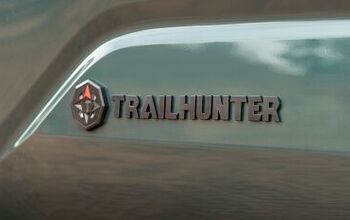
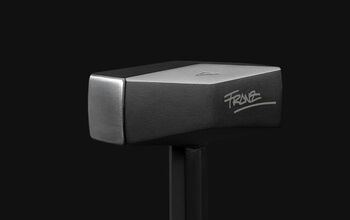
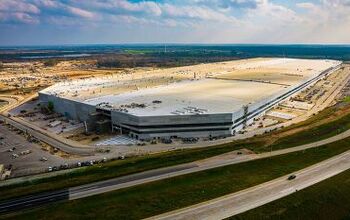
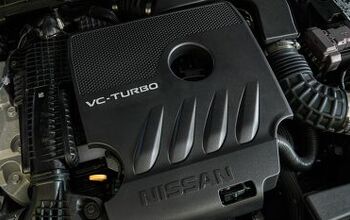

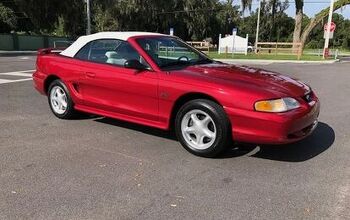



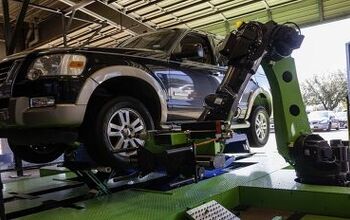
Comments
Join the conversation
As always, the money factor is the problem. Companies, such as Vigilant Technologies, offer not only police departments access to their massive plate database, but to repo people, and pretty much anybody who ponies up for the service. So plate readers can be all over and you might not even know. I asked my PD friend in FL to check for my plates in the system. Four of the six plates came up. Interesting to note that they don't (yet) have the ability to segregate by state plate so he had a small amount of digging to do. The only cars not in the system were those that are never parked on the street or are used sparingly. So it is certainly possible to track a person's movements and with enough data, determine a lot about their daily life. One can argue about whether this tool is of great value for the police, but the idea that more data about individuals going into the hands of private is not a good one. Privacy is dying at a rapid rate and unless the citizens open their mouths and close their wallets to the offending companies, we are done as a free society. Interesting to note that plate readers were the holy grail for the parking industry, but that use is only a tiny fraction of where you will find plate readers.
Waaaa...they want to track me with my plate. That's wrong. ow let me plug in that Samsung/Apple/Google tracking device I paid all that money for.